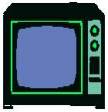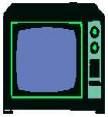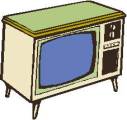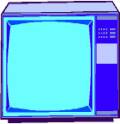Ligo daiquiri
Ligo daiquiri
|





††††††††††† LIGO is the Laser Interferometer
Gravitational-Wave Observatory, the first direct attempt to verify the
existence of gravity waves and the biggest test of general relativityís
predictions about gravity to date.† † The apparatus consists of two four kilometer vacuum tubes set
at right angles to each other. A laser beam is sent down each tube and
reflected back by a mirror at the end of each tube. Incident gravity waves
striking the detector would slightly decrease the length of one tube while
slightly increasing the length of the other.† An interferometer at the joint of the tubes will be used
to measure the time it takes each laser beam to travel the length of the
tube and back and the interference patterns produced by the rejoining of
the beams. In the absence of gravitational waves, the lengths of the tubes
will remain the same and the lasers will remain in phase with each other,
producing constructive interference when they recombine at the
interferometer. In the presence of gravity waves, however, the slight
change in the length of one tube will cause the beams to be slightly out of
phase, resulting in an irregular interference pattern. †Potential changes in the length of the arms from gravity waves
would be very minute, about 10-18 meters over the four kilometer
distance of the arm; as a result, isolating the apparatus from seismic and
other environmental disturbances and making extremely precise time
measurements are crucial. †Although many critics of the experiment are doubtful that the
apparatus will be sensitive enough to clearly demonstrate the incredibly
small effects of the gravity wave, proponents are hopeful that the
four-kilometer long apparatus will be sufficient to demonstrate the
existence of these waves. Numerous devices are required so that, in the
event that the waves are observed, the orientation of the waves relative to
earth can be determined; by measuring the time difference between waves
detected at each of the installations and triangulation, a good estimate of
the location of the origin of the wave can be made. The first LIGO
installation is in Livingston, Louisiana and the other is in Hanford,
Washington; if the experiment proves successful with these installations,
other installations worldwide would most likely follow. If the experiments
detect gravitational waves, scientists hope to use them to pinpoint black
holes and other cosmic phenomena that would produce large
disturbances.†††† Artistís rendition of the LIGO apparatus Artistís rendition of the LIGO apparatus.
††



 †††††††††††††††††††††††††††††††††††††††††††††††††††††††††††††††††††††††† ††††††††††††††††††††††††
†††††††††††††††††††††††††††††††††††††††††††††††††††††††††††††††††††††††† ††††††††††††††††††††††††
††††††††††††††††  †††††††††††††††††††††††††††††††††††††††††††††††† ††††††††††††††††††††††††††††††††††††††††††††††††
†††††††††††††††††††††††††††††††††††††††††††††††† ††††††††††††††††††††††††††††††††††††††††††††††††
†††††††††††††††††††  †††††††††††††††††††††††††††††††††††††††††††††††††††††††††††††††††††††††† ††††††††††††††††††††††††
†††††††††††††††††††††††††††††††††††††††††††††††††††††††††††††††††††††††† ††††††††††††††††††††††††
††††††††††††††  †††††††††††††††††††††††††††††††††††††††††††††††††††††††††††††††††††††††††††††††††††††††††††††††††††
††††††††††††††††††††††††††††††††††††††††††††††††††††††††††††††††††††††††††††††††††††††††††††††††††† ††††† ††††††††††† †††††††††††
††††† ††††††††††† ††††††††††† †††††††††††† ††††††††††††††††††††††††††††††††††††††††††††††††††††††††††† †††††††††††††††††††††††††
†††††††††††† ††††††††††††††††††††††††††††††††††††††††††††††††††††††††††† ††††††††††††††††††††††††† ††
††
††††††††††††††††††††  †††††††††††† ††††††††††††††††††††††††††††††††††††††††††††††††††††††††††††††††††††††††††††††††††††††
†††††††††††† ††††††††††††††††††††††††††††††††††††††††††††††††††††††††††††††††††††††††††††††††††††††
†††††††††††††††††††††
† †††††††††††† ††††††††††††††††††††††† †††††††††††††††††††††††††††††††††††††††††††††††††††††††††††††
†††††††††††† ††††††††††††††††††††††† †††††††††††††††††††††††††††††††††††††††††††††††††††††††††††††
††††††††††††††††††††  †††††††††††††††††††††††††††††††††††††††††††††††††††††††††††††††††††††††††††††††††††††††††††††††††††
†††††††††††††††††††††††††††††††††††††††††††††††††††††††††††††††††††††††††††††††††††††††††††††††††††
†††††††††††††††††††  †††††††††††††††††††††††††††††††††††††††††††††††††††††††††††††††††††††††††††††††††††††††††††††††††††
††††††††††††††††††††††††††††††††††††††††††††††††††††††††††††††††††††††††††††††††††††††††††††††††††† †††††† †††††††††††† †††††††††
†††††† †††††††††††† ††††††††† †††††††††††††††††††††††††††††††††††††††††††††††††††††††††††††††††††††††††††††††††††††††††††††††
†††††††††††††††††††††††††††††††††††††††††††††††††††††††††††††††††††††††††††††††††††††††††††††††  ††
††
†††††  ††††††††† †††††††††††††††††††††††††††††††††††††††††††††††††††††††††††††††††††††††††††††††††††
††††††††† ††††††††††††††††††††††††††††††††††††††††††††††††††††††††††††††††††††††††††††††††††† 
†††††††††††††††††††  ††††††††††††††††††††††††††††††††††††††††††††††††††††††††† ††††††††††††††††††††††††††††††††††††
††††††††††††††††††††††††††††††††††††††††††††††††††††††††† ††††††††††††††††††††††††††††††††††††
††††††††††††††††††††  ††††††††††††††††††††††††††††††††††††††††††††††††††††††††††††††††††††††††††††††††† ††††††††††
††††††††††††††††††††††††††††††††††††††††††††††††††††††††††††††††††††††††††††††††† ††††††††††
††††††††† 




